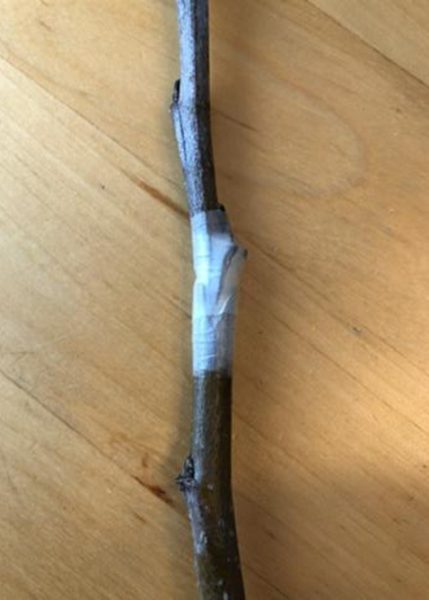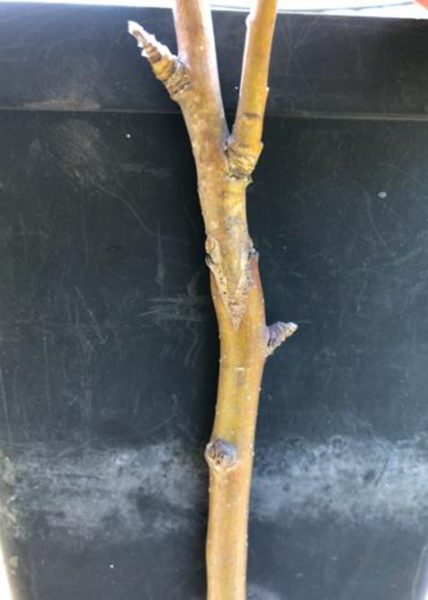
Jason Bonham, Horticulturist
What if you wanted the vigor of a wild plum with the large sweet fruit of a farmer’s market plum? With the magic of grafting, you can have both. Grafting is a horticultural practice in which a branch or bud of one plant is attached to another plant. Practically every commercially available fruit tree or rose bush has been grafted. The next time you’re walking around your neighborhood – which I know we all currently are – take a look at the base of a citrus tree and you will likely see a line where the tree was grafted when it was just a small plant in a nursery. The graft has long healed over but you will almost always be able to see that line and a difference in the bark texture and color.
So, you may be wondering: how do I do this at home? Well, the basic process is simple but perfecting it takes time and practice. First you need to find the rootstock, this is the plant that will have its roots in the ground. Disease resistance, drought tolerance and quick growth are all properties that make a good rootstock. The cutting that you ultimately attach to the rootstock is called the scion. The scion you choose should have properties to produce exceptional fruit or beautiful flowers.
Now that you have your rootstock and scion, you will need to cut and splice them together. There are plenty of techniques for doing this but the main goal is to bring the rootstock and scion cuts into tight contact so that they can exchange nutrients and water. After the cuttings are joined, they are sealed so that they don’t dry out or become infected. A plastic bag over the cutting is sometimes used to prevent desiccation until the junction heals over and the cutting resumes growth.
Don’t be discouraged if your grafts don’t take. The rate of success is low even for good grafters. There’s so much more to learn about grafting; please take to the internet and explore this interesting topic more. You can start here. When the Garden reopens, I hope you’ll come to check out the grafted fig tree in the Crops of the World garden. Hope to see you there soon!
 This is a simple graft called saddle graft.
This is a simple graft called saddle graft.
 The scion and rootstock are pressed together and then wrapped with grafting tape.
The scion and rootstock are pressed together and then wrapped with grafting tape.
 Depending on the plant a graft can take months to heal.
Depending on the plant a graft can take months to heal.
Featured Image: From “New methods of grafting and budding vines” (1902)
